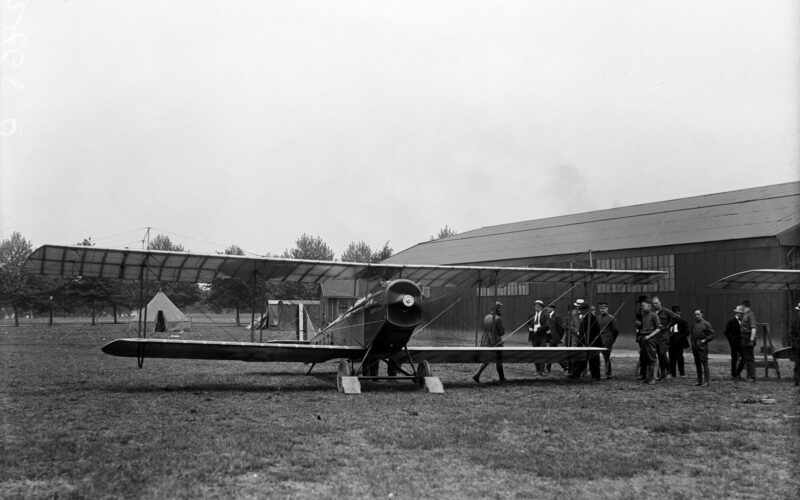Boeing, Pratt & Whitney, Sikorsky, United Airlines…These names are iconic within the American aeronautical industry. And for good reason, as such companies have been a part of the industrial landscape for a century. But did you know that at one point in history, they were all part of the same company?
The birth of air mail
With the advent of aviation at the turn of the 20th century, one of the first widespread applications of this emerging technology was mail transport. In the United States, the role was initially given to the United States Army Air Service before being transferred to the civilian Post Office Department (USPS) in 1918.
The development of an airmail network across the United States led to several innovations, such as the establishment of radio stations to guide pilots along the way, and the introduction of lighted runways to facilitate landing by night.
In 1925, the market was opened to private operators through the Contract Air Mail Act, also known as the Kelly Act. The USPS contracted as many as 45 commercial carriers to take over mail routes.
With every flight being a risky adventure, air mail pilots gained the status of trailblazing adventurers all around the world. In France, Antoine de Saint-Exupéry used his piloting experience flying for the Aéropostale as inspiration for writing several novels. In 1927, US Air Mail pilot Charles Lindbergh earned international recognition after successfully flying solo from New York to Paris on the Spirit of Saint Louis.
A lucrative business
By the end of the 1920s, North American routes had become increasingly monopolized by a handful of United States air carriers. In 1929, Frederick Rentschler, the founder of Pratt & Whitney Aircraft, convinced William Boeing of The Boeing Company to create the United Aircraft and Transport Corporation. This holding acquired a number of other companies related to aviation, such as Chance Vought Corporation, Sikorsky Aircraft Corporation. This powerful monopoly allowed for complete control of the entire supply chain. The United Aircraft and Transport Corporation even acquired several air carriers to fly its aircraft. They would become Boeing Air Transport, and later United Airlines.
Based on the recommendations of Walter Folger Brown, the postmaster general under President Herbert Hoover, the Air Mail Act of 1930 changed the method in which air mail contracts were awarded. Instead of a flat rate per mile regardless of the weight of the load, contracts were awarded based on aircraft payload per route, regardless of the amount of mail the plane was carrying. Companies with larger aircraft were favored.
One of the prominent beneficiaries of this policy change was United Airlines, which was awarded most of the northern air mail route due to its well-established routes, its manufacturing capacity, and innovative aircraft. In less than a year, the corporation was able to design a new biplane for air mail transport: the Boeing 80. The aircraft featured three engines and could carry 12 passengers. The capacity to transport people became an additional revenue stream for companies that were not paid by the amount of mail they were carrying.
The Air Mail Scandal
Four years later, an investigation into the attribution of the air mail contracts by the postmaster was initiated by Senator Hugo Black, after 90% of the contracts had been awarded to three big holding companies, including the United Aircraft and Transport Corporation.
The investigation found evidence of collusion between the Hoover Administration and the contractors, systematically setting aside smaller bidders. Consequently, all contracts were canceled by newly elected President Franklin Delano Roosevelt on February 19, 1934, with the Army Air Corps taking over the service once more.
The investigation’s hearing also revealed the monopolistic nature of the United Aircraft and Transport Corporation. It was subsequently ordered to be broken up. All manufacturing west of the Mississippi went to The Boeing Company, headquartered in Seattle. Everything east of the river went to Rentschler’s United Aircraft, which remained in Hartford and would eventually become United Technology. The air transport services became a new entity, United Air Lines, based in Chicago.
Transporting mail proved difficult for the Army Air Corps, whose aircraft were unsuitable for the mission. Most were combat planes intended to fly by day and in good weather. Thus, a 15% spike in flight accidents alerted the Minister of War to the need for better aircraft, doctrine, and training. The restructuring initiated likely contributed to the success of American pilots in the Second World War.
In June 1934, new contracts were signed with private airlines and the Army Air Corps was relieved from its mail duties. From the late 1940s, mail planes progressively disappeared. Instead, mail could be transported in the hold of the growing number of airline flights, the same way it is carried to this day. Today, only remote areas of the United States such as Alaska still operate mail flights.

